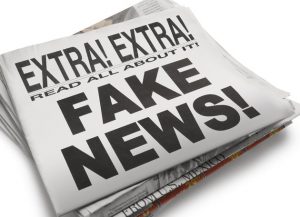Real fake news may be about to hit us with a force we can only imagine

It’s a truly terrifying thought. Noah Smith, a former assistant professor of finance, has suggested that fake news is likely to appear more real in the near future.
In fact, it’s going to be indistinguishable from the real thing. And the robots will be responsible.
How and why you might ask. What can robots do to bump up the credibility of news hoaxes? What more can they do than a wily and dishonest human?
Mr Smith argues that machine learning, which can teach computers to recognize images, drive cars, pick stocks etc, can give them another formidable talent too. They can be taught to lie. For an entity with a brain but not a conscience (remind you of anyone?) that can be dangerous.
He’s not wrong about the great technological facilitation of rumours, hoaxes and lies. Already, we see doctored images and videos. It becomes a struggle to distinguish fact from fiction. In the alternative facts universe of the Donald Trump White House, night can be turned into day with the click of a mouse.
Mr Smith predicts “soon, thanks to machine learning, it will probably be possible to easily and quickly create realistic forgeries of someone’s face and make it seem as if they are speaking in their own voice.” He points to lip-synching technology, which is already blurring the distinction between what someone really said and what a malicious entity wants them to say. Mr Smith warns that “soon, 12-year-olds in their bedrooms will be able to create photorealistic, perfect-sounding fakes of politicians, business leaders, relatives and friends saying anything imaginable.”
Mr Trump calls unfavourable news stories “fake news” probably because he’d like them to be untrue. But the real fake news may be about to hit us.

